
Molds & Accessories
XRF Boric Acid Lab Powder Pellet Pressing Mold for Laboratory Use
Item Number : PMXB
Price varies based on specs and customizations
- Material
- Cr12MoV
- Indenter hardness
- HRC60-HRC62
- Sample size
- φ32 / φ40 mm
- Cavity depth
- 45 mm
- External dimensions
- φ73×133 mm
Shipping:
Contact us to get shipping details Enjoy On-time Dispatch Guarantee.
Why Choose Us
Reliable PartnerEasy ordering process, quality products, and dedicated support for your business success.
Applications
XRF Boric Acid Powder Pellet Pressing Mold wraps the sample with boric acid powder and then presses the powder into shape, which is mainly used for sample preparation of X-ray fluorescence spectrometer samples.
Special sizes press molds can be customized according to customer requirements.
Detail & Parts


Technical specifications
| Instrument model | PMXB |
|---|---|
| Press the shape of the sample |  |
| Mold material | Alloy tool steel:C-12Nov |
| Indenter hardness | HRC60-HRC62 |
| Sample size | Φ32、Φ40mm |
| Depth of cavity | 45m (N) |
| External dimensions | Φ73X133mm(LXH) |
| Mold weight | 3.2Kg |
| Size diagram | 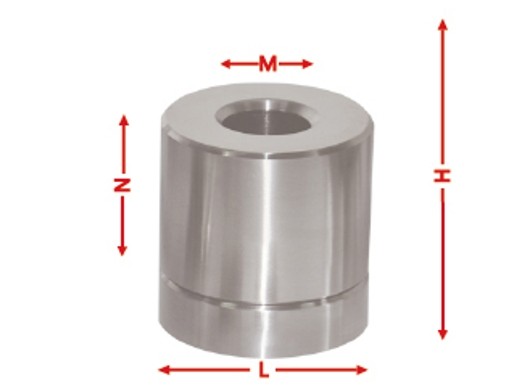 |
Mold pressure conversion table
| The pressure is strong.[Mpa] | 50 | 100 | 200 | 300 | 400 | 600 | 800 | 1000 | 1200 | 1500 |
| Φ32 T | 4.02 | 8.04 | 16 | 24.1 | 32.1 | 48.2 | 64.3 | 80.4 | 96.5 | 120 |
| Φ40 T | 6.28 | 12.5 | 25.1 | 37.6 | 50.2 | 75.3 | 100 | 125 | 150 | 188 |
| Tip: The mold is used in 100-800 MPa domestically, and the maximum meal limit of the mold is 1500 MPa. | ||||||||||
Operation steps
Boracic acid dies are used to wrap the sample with boracic acid powder and then press the powder. It is suitable for forming of x-ray fluorescence spectrophotometer samples. Die sheet size: outer diameter 40 mm; sample size: 32mm; sheet thickness: 5~8 mm; special dies can be customized according to requirements.

Step 1: Assemble the die according to the operation diagram and install the sample in the cavity.

Step 2: Put the die in the center of the hydraulic press and pressurize to required pressure.

Step 3: Assemble the die according to the release diagram , eject the sample out of the die bushing with the screw rod.

Step 4: Take out the die from the hydraulic press , and remove the sample gently.
Precautions for mold maintenance
To ensure accurate test results, clean the mold surface with dust-free paper before each use to avoid the anti-rust oil from affecting the sample. Avoid exceeding the maximum pressure when applying pressure. Clean the mold and samples after use to prevent corrosion. Apply anti-rust oil and store the mold in a dry environment if not used for a long time to prevent damage.
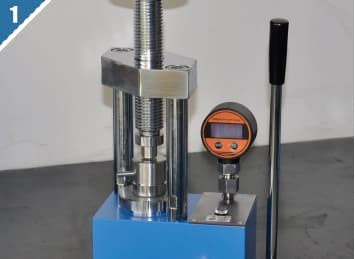
Step 1: Placing the Mold.
To begin, place the mold in the center of the tablet press. It is important to note that the maximum pressure of the mold cannot be exceeded when pressurized. This will prevent any damage to the mold and ensure accurate test results.
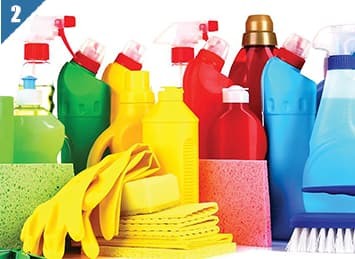
Step 2: Cleaning the Mold.
After each use, it is essential to clean the mold to prevent any contamination of the sample. Using dust-free paper, wipe the surface of the mold clean. If there are sample residues on the surface that cannot be removed, please do not use chemical reagents to clean and soak. This could potentially damage the mold and impact the accuracy of the test results.

Step 3: Applying Anti-Rust Oil.
If the mold is not used for an extended period, it is recommended to apply anti-rust oil on the surface of the mold to prevent rusting. This step will help prolong the life of the mold and ensure that it remains in good condition for future use.

Step 4: Storing the Mold.
Lastly, if the mold is not used for a long time, it needs to be stored in a dry environment. This will prevent any moisture from accumulating on the mold and causing damage.
Full range of lab press types
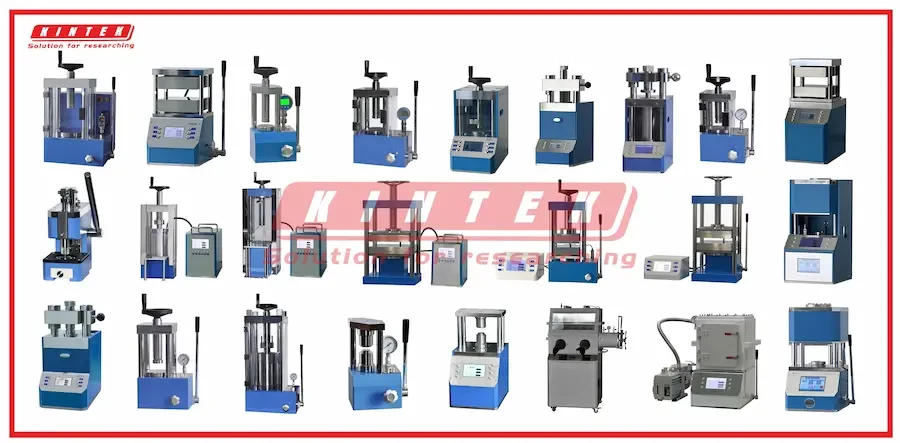
Click to view our full range of lab press products.
Any question? Our experts have helped many laboratories choose their lab press, contact us now!
Full range of types of laboratory press molds
We have a full range of molds for you to choose from, and the molds fit the body perfectly.
If you need molds with special shapes, we can also customize them for you.
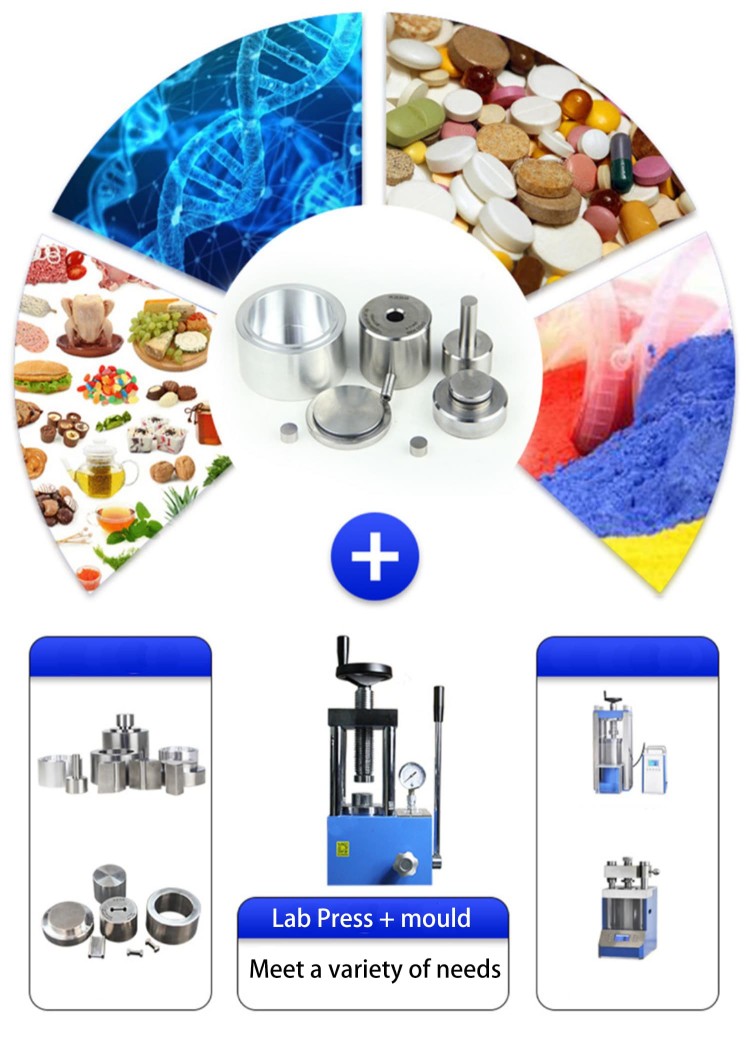
Warnings
Operator safety is the top important issue! Please operate the equipment with cautions. Working with inflammable& explosive or toxic gases is very dangerous, operators must take all necessary precautions before starting the equipment. Working with positive pressure inside the reactors or chambers is dangerous, operator must fellow the safety procedures strictly. Extra caution must also be taken when operating with air-reactive materials, especially under vacuum. A leak can draw air into the apparatus and cause a violent reaction to occur.
Designed for You
KinTek provide deep custom made service and equipment to worldwide customers, our specialized teamwork and rich experienced engineers are capable to undertake the custom tailoring hardware and software equipment requirements, and help our customer to build up the exclusive and personalized equipment and solution!
Would you please drop your ideas to us, our engineers are ready for you now!
FAQ
What Is A Press Mold?
What Are The Applications Of Pellet Presses?
What Is Press Mould In Ceramics?
How Does A Pellet Press Work?
How Do You Prepare Pressed Pellets For XRF?
How Are Pellet Molds Used?
What Are The Benefits Of Using A Pellet Press?
What Pressure Should XRF Pellets Be?
What Types Of Materials Can Be Pelletized Using Pellet Molds?
What Factors Should Be Considered When Selecting A Pellet Press?
What Is The Advantage Of XRF Pressed Pellet Technique?
How Can One Select The Appropriate Pellet Mold For Their Specific Application?
4.9
out of
5
Using this boric acid powder mold for XRF sample preparation has significantly improved the efficiency of our lab. It ensures consistent and accurate results, a must-have tool for any lab.
4.7
out of
5
The mold's precise design and durable construction make it an excellent choice for preparing XRF samples. It has greatly simplified our sample preparation process.
4.8
out of
5
The mold's ease of use and versatility make it a valuable addition to our lab. It has helped us streamline our XRF sample preparation process while maintaining accuracy.
4.6
out of
5
This boric acid powder mold has been a game-changer for our lab. It provides reliable and reproducible results, making it an indispensable tool for our XRF analysis.
4.9
out of
5
The mold's superior quality and ease of use have made it a favorite among our lab technicians. It has significantly improved the efficiency of our XRF sample preparation.
4.7
out of
5
The mold's durability and ease of maintenance make it a worthwhile investment for our lab. It has proven to be a reliable workhorse for our XRF sample preparation needs.
4.8
out of
5
This boric acid powder mold has exceeded our expectations. It has streamlined our sample preparation process, resulting in faster turnaround times and improved accuracy in our XRF analysis.
4.6
out of
5
The mold's compact design and user-friendly features make it a valuable asset to our lab. It has simplified our XRF sample preparation workflow, allowing us to focus on more critical tasks.
4.9
out of
5
The mold's exceptional quality and attention to detail are evident in the consistent and reliable results we obtain. It has become an indispensable tool in our XRF sample preparation process.
4.7
out of
5
This boric acid powder mold has been a revelation for our lab. It has significantly reduced our sample preparation time while maintaining the highest standards of accuracy and precision.
4.8
out of
5
The mold's intuitive design and ease of operation make it a joy to use. It has drastically improved our XRF sample preparation efficiency, allowing us to handle more samples in less time.
4.6
out of
5
This mold has been a lifesaver for our lab. Its rugged construction and reliable performance have made it an essential tool for our XRF sample preparation. Highly recommended!
4.9
out of
5
The mold's innovative design and advanced features have revolutionized our XRF sample preparation process. It has enabled us to achieve unmatched accuracy and precision in our analysis.
4.7
out of
5
This boric acid powder mold is a testament to exceptional craftsmanship. Its durability and consistent performance have made it an indispensable part of our XRF sample preparation workflow.
4.8
out of
5
The mold's user-centric design and intuitive operation have made it a favorite among our lab technicians. It has significantly reduced our sample preparation time while maintaining the highest quality standards.
4.6
out of
5
This mold has exceeded our expectations in every way. Its exceptional quality and attention to detail are reflected in the consistent and reliable results we obtain. Highly recommended!
4.9
out of
5
The mold's superior design and ease of use have made it an indispensable tool in our XRF sample preparation process. It has enabled us to achieve remarkable accuracy and efficiency in our analysis.
REQUEST A QUOTE
Our professional team will reply to you within one business day. Please feel free to contact us!
Related Products
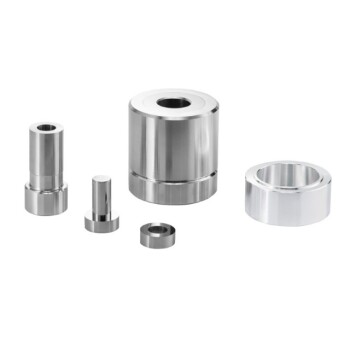
Ring Press Mold for Lab Applications
Ring Press Dies, also known as Circular Pellet Press Die Sets, are integral components in various industrial and laboratory processes.

Anti-Cracking Press Mold for Lab Use
The anti-cracking press mold is a specialized equipment designed for molding various shapes and sizes of film using high pressure and electric heating.

Assemble Lab Cylindrical Press Mold
Get reliable and precise molding with Assemble Lab Cylindrical Press Mold. Perfect for ultra-fine powder or delicate samples, widely used in material research and development.

No Demolding Lab Infrared Press Mold for Laboratory Applications
Effortlessly test your samples with no demolding required using our lab infrared press mold. Enjoy high transmittance and customizable sizes for your convenience.

Round Bidirectional Press Mold for Lab
The round bidirectional press mold is a specialized tool used in high-pressure molding processes, particularly for creating intricate shapes from metal powders.
Related Articles

Operating of Automatic Lab xrf Pellet Press
How to use the Automatic Lab xrf Pellet Press, including steel ring, plastic ring, boric acid mold

Effective Preparation of Samples for XRF Analysis via Pressed Pellets Method
The process of making pressed pellets for XRF analysis is a popular and widely used method. It offers several advantages over other sample preparation techniques. Pressed pellets have a higher signal-to-noise ratio compared to loose powder samples, allowing for the detection of even the lightest elements.

What is xrf analysis and how to making pressed xrf pellets
What is xrf analysis and how to making pressed xrf pellets, there are also some precautions in the xrf sample preparation process

Guide for Xrf Pellet Press
An XRF tablet press is a machine used to prepare samples for X-ray fluorescence (XRF) analysis by pressing them into a uniform tablet or pellet form.

Techniques for Sample Preparation in X-Ray Fluorescence Analysis: Pressed and Loose Powder Methods
X-ray fluorescence (XRF) analysis is a common technique used for analyzing powders in various industries. When it comes to preparing powder samples for XRF analysis, there are two main methods: pressed powder method and loose powder method.The pressed powder method involves compressing the sample into a pellet or disk, while the loose powder method involves simply placing the sample into a cup or container. Each method has its advantages and disadvantages, and the choice of method depends on the specific requirements of the analysis.

Automated laboratory XRF and KBR pellet press operating procedures
Introduction to automated laboratory XRF and KBR pellet press operating procedures.

How to Choose the Right XRF Pellet Press for Your Needs
X-ray fluorescence (XRF) analysis requires the preparation of uniform, high-quality pellets for accurate analysis. To achieve this, there are several XRF pellet preparation methods available, including hydraulic, manual, and automated presses.

Pressing Powder Samples and Molding Polymer Films: A Comprehensive Guide
Pressing powder samples is done to create a solid material that remains intact even after the load is removed. This process involves pushing the powder grains closer together, closing the gaps between them and forcing them to flow and rearrange themselves into a more compact arrangement. As the available volume reduces, the flow of particles stops, and they undergo plastic and elastic deformations that result in bonding between the grains.

A Comprehensive Guide on Pressing XRF Pellets Using a KinTek Automatic Hydraulic Press
XRF (X-ray fluorescence) analysis is a powerful technique used in various industries for material analysis. One crucial step in the XRF analysis process is the preparation of high-quality XRF pellets. These pellets serve as the sample for analysis and need to be properly pressed to ensure accurate results.

XRF Pelletising for Solid Samples Tips and Tricks
X-ray fluorescence (XRF) analysis is a non-destructive analytical technique used to determine the elemental composition of solid, liquid, and powdered samples.

A Guide To PREPARE SAMPLES FOR XRF ANALYSIS
There are many ways to prepare samples for XRF analysis. The choice of method will also affect the time it takes to get results and the cost of the analysis.

FTIR Pellet Press The Game-Changer in Spectroscopy Analysis
Fourier Transform Infrared Spectroscopy (FTIR) is a widely used analytical technique in the field of chemistry and materials science. It is a non-destructive method that allows the identification and quantification of chemical compounds in a sample.